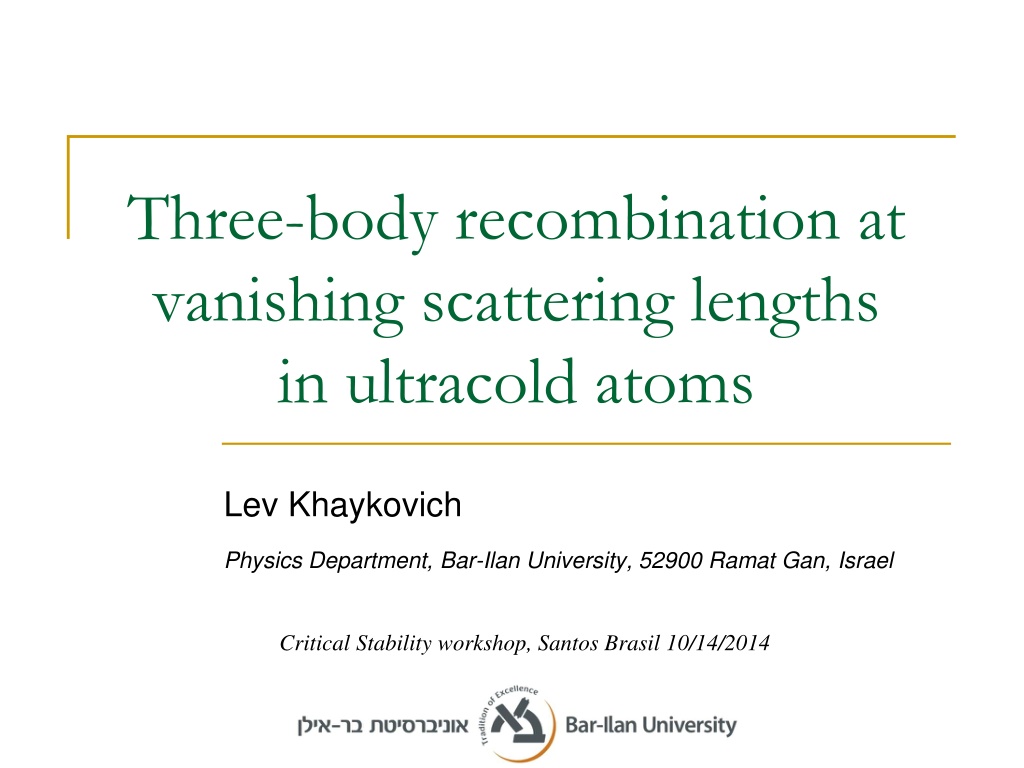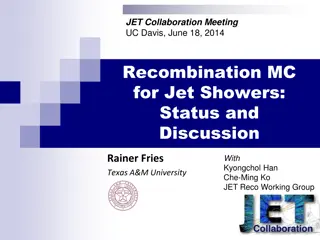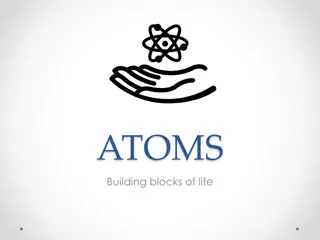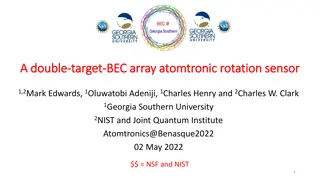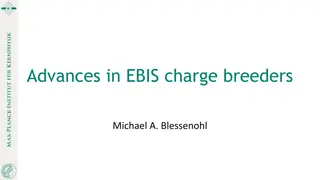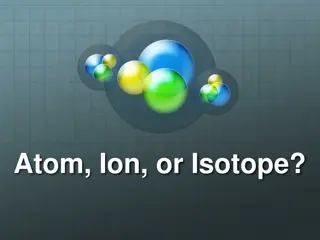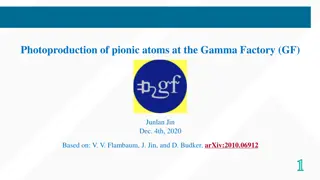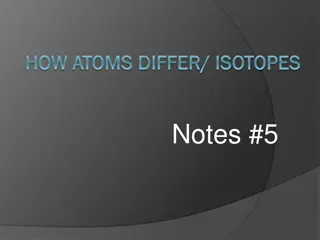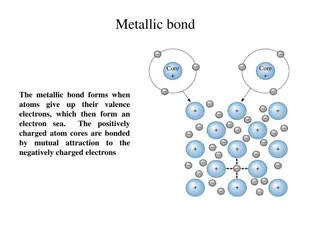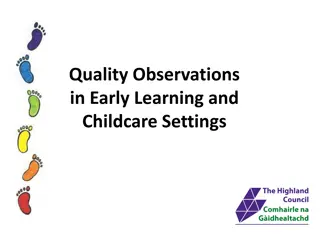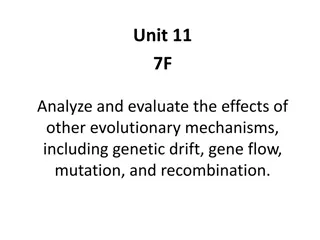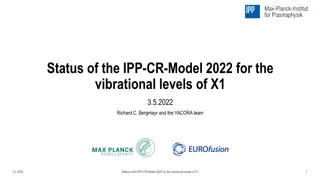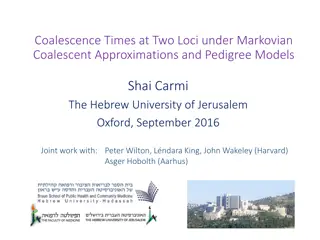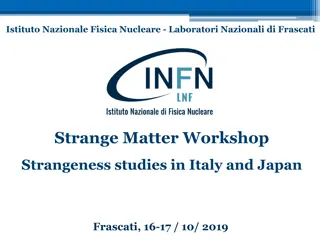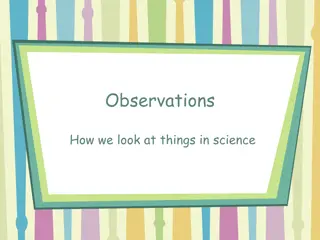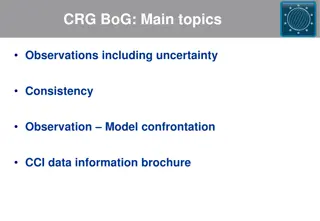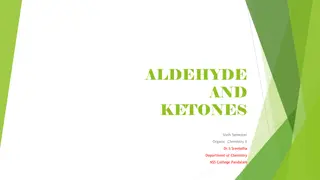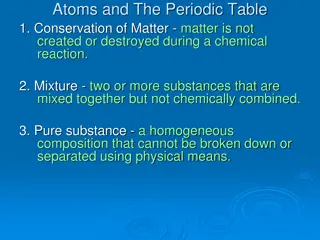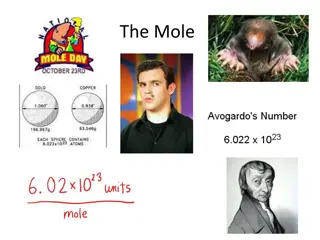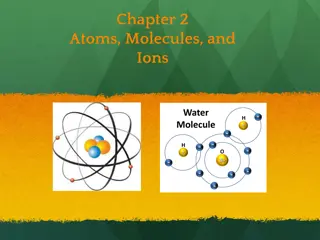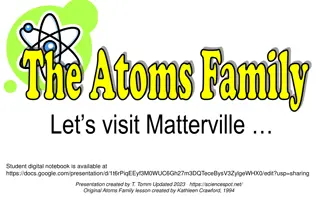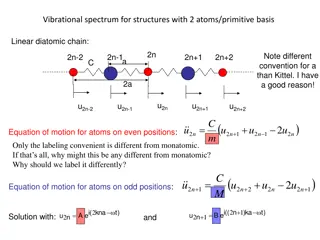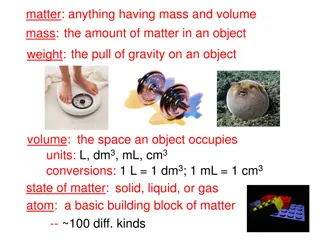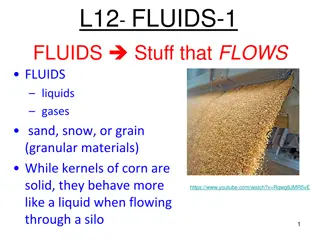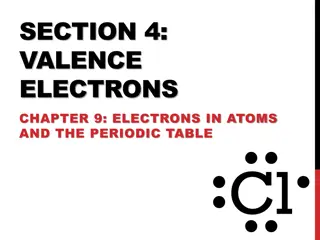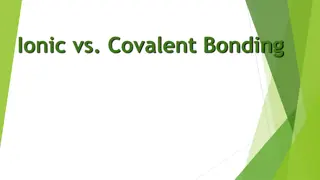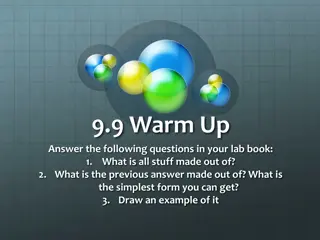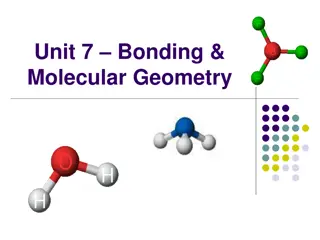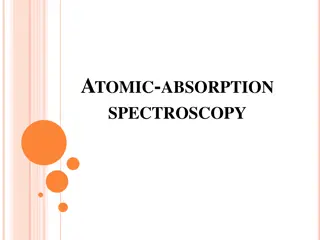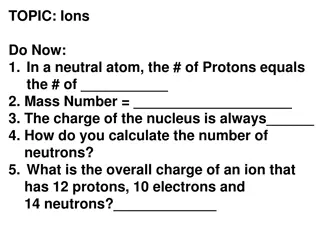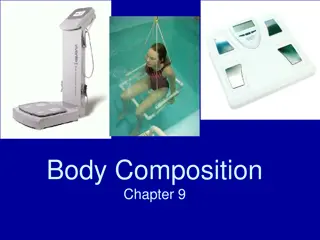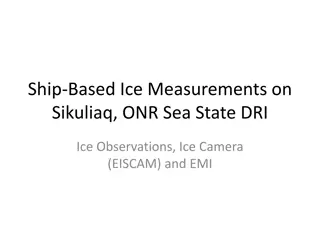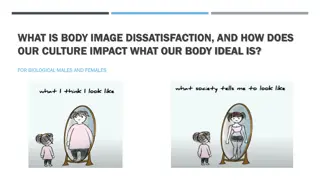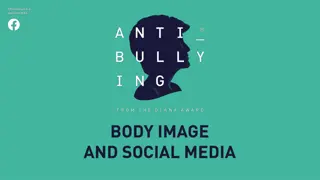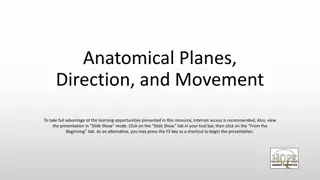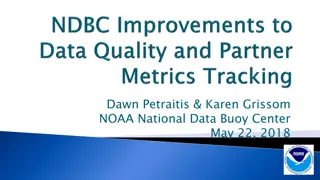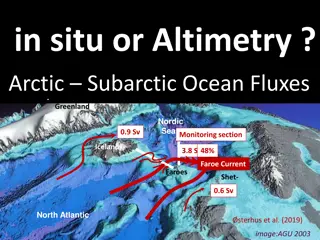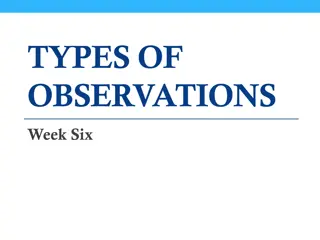Three-Body Recombination in Ultracold Atoms: Studies and Observations
Investigating three-body recombination in ultracold atoms, this study explores the Efimov scenario, experimental setups with ultracold 7Li atoms, and the implications of three-body inelastic collisions. The research delves into universality windows, real molecule comparisons, and the loss rate from traps, shedding light on the intriguing physics of ultracold atomic systems.
Download Presentation

Please find below an Image/Link to download the presentation.
The content on the website is provided AS IS for your information and personal use only. It may not be sold, licensed, or shared on other websites without obtaining consent from the author. Download presentation by click this link. If you encounter any issues during the download, it is possible that the publisher has removed the file from their server.
E N D
Presentation Transcript
Three-body recombination at vanishing scattering lengths in ultracold atoms Lev Khaykovich Physics Department, Bar-Ilan University, 52900 Ramat Gan, Israel Critical Stability workshop, Santos Brasil 10/14/2014
System: dilute gas of ultracold atoms Magneto-optical trap of Li atoms Close to the resonance (orbital electronic states) visible (laser) light 671 nm (~2 eV) Magnetic fields Ultrahigh vacuum environment Dissipative trap N ~ 5x108 atoms n ~ 1010 atoms/cm3 Dilute gas of atoms:
Experimental setup: ultracold 7Li atoms Cooling: Trapping: conservative atom trap (our case: focus of a powerful infrared laser) Zeeman slower Crossed-beam optical trap Evaporation: ~2x104 atoms ~1.5 K MOT ~109 atoms Typical numbers: Temperature: Relative velocities CMOT few cm/sec ~5x108 atoms Collision energies few peV N. Gross and L. Khaykovich, PRA 77, 023604 (2008)
Study of Efimov scenario with ultracold atoms
Efimov scenario universality window k 1 r 1 r 1 0 a 0 22 7 . 1 22 7 . 1 first excited level 22 7 . 1 lowest level Borromean region: trimers without pairwise binding ) ( ln ) ( = N s a r 0 0 ( ) + 1 n T n T exp 2 E E s 0
Efimov scenario and real molecules a < 0 a > 0 No 2-body bound states Energy Energy One 2-body bound state Vbg(R) Vbg(R) Atomic separation R Atomic separation R Energy Real molecules: many deeply bound states Vbg(R) Atomic separation R
Three-body recombination Three body inelastic collisions result in a weakly (or deeply) bound molecule. 2Eb/3 Eb/3 U0 Release of the binding energy causes loss of atoms from a finite depth trap which probes 3-body physics. Loss rate from a trap: N = 2 3 K3 3-body loss rate coefficient [cm6/sec] K n N 3
Experimental observables k 1 r 1 a 1 a 1 r 1 0 a * 0 One atom and a dimer couple to an Efimov trimer Three atoms couple to an Efimov trimer Experimental observable - enhanced three-body recombination.
Experimental observables k 1 r 1 a 1 a* 1 r 1 0 a 0 0 Three atoms couple to an Efimov trimer Two paths for the 3- body recombination towards weakly bound state interfere destructively. Experimental observable recombination minimum.
Experimental observables 1 4 mK 3 ) = Recombination length: 3 3 ( C a Recombination minimum Efimov resonance B. D. Ezry, C. H. Greene and J. P. Burke Jr., Phys. Rev. Lett. 83 1751 (1999).
Efimov scenario: a short overview Efimov physics (and beyond) with ultracold atoms: 2006 - 133Cs Innsbruck 2008 2010 6Li 3-component Fermi gas in Heidelberg, Penn State and Tokyo Universities 2009; 2013 39K in Florence, Italy 2009 41K - 87Rb in Florence, Italy 2009; 2013 7Li in Rice University, Huston, TX 2009 - 7Li in BIU, Israel 2012 - 85Rb and 40K - 87Rb JILA, Boulder, CO 2014 - 133Cs - 6Li in Chicago and Heidelberg* Universities *Eva Kuhnle s talk on Friday.
Experimental playground - 7Li 3 identical bosons on a single nuclear-spin state. Absolute ground state Next to the lowest Zeeman state
Experimental playground - 7Li Absolute ground state The one but lowest Zeeman state Feshbach resonance Feshbach resonance N. Gross, Z. Shotan, O. Machtey, S. Kokkelmans and L. Khaykovich, C.R. Physique 12, 4 (2011).
Experimental results - 7Li a > 0: T= 2 3 K a < 0: T= 1 2 K mf = 1; Feshbach resonance ~738G. mf = 0; Feshbach resonance ~894G. N. Gross, Z. Shotan, S. Kokkelmans and L. Khaykovich, PRL 103, 163202 (2009); PRL 105, 103203 (2010).
Three body recombination at vanishing scattering lengths
Motivation Purely academic.
Motivation Purely academic. Application: optimization of evaporative cooling in an optical trap. Evaporative cooling in a nutshell: - high energy atoms are evaporated due to final potential depth; - elastic collisions re-establish the thermal equilibrium; - Good collisions: elastic; - Bad collisions: three-body recombination (heating); el - optical trap weakens during evaporation; n which can be compensated by increasing a. But: 3 3 K n b 2 2 4 n a
Zero-crossings 7Li lower hyperfine level. Feshbach resonance mF state. 400 300 200 100 a [a0] 0 -100 850 G -200 412 G 575 G -300 -400 0 200 400 Magnetic field [G] 600 800 1000
Early observations Same scattering length different three-body recombination rates.
Early observations Universal region. K 4 a 3
Early observations Saturation of the three-body recombination rate. N. Gross, Z. Shotan, S.J.J.M.F. Kokkelmans and L. Khaykovich, PRL 103, 163202 (2009).
Scattering phase shift at zero-crossing Effective range expansion of the scattering phase shift: 1 B 1 ( ( ) k ) = 0 2 a cot + ( ) k R B k Inconvenient when e ( ) 2 a Inverted expression: ( ( ) k ) tan 1 = 2) 2 + ( a R a k 0 a Well defined when e 2 k = 2 2 V R a Effective volume: e e See also: C. L. Blackley, P. S. Julienne and J. M. Hutson, PRA 89, 042701 (2014).
Feshbach resonances and zero-crossings Scattering length and effective range: 40 400 30 200 20 a, Re[a0] 0 10 -200 0 -400 -10 500 550 600 Magnetic field [G] 650 700 750 800 800 820 840 860 880 900 920 940 Magnetic field [G] N. Gross, Z. Shotan, S.J.J.M.F. Kokkelmans and L. Khaykovich, PRL 103, 163202 (2009).
Two-body physics near zero-crossing Energy dependent two-body collisional cross-section: ( ) 2 2 8 8 k V k a ( ( ) k ) = = 2 ( ) sin e k ( ) 2 2 2 2 1 + V k a k e Condition for vanishing collisional cross-section: 2 k e 2 = = a V k = a ( ) 0 k e 2 R The zero-crossing position is well defined now by precise characterization of Feshbach resonances: N. Gross, Z. Shotan, O. Machtey, S. Kokkelmans and L. Khaykovich, C.R. Physique 12, 4 (2011). P. S. Julienne and J. M. Hutson, Phys. Rev. A 89 052715 (2014) (Data from Heidelberg, ENS, Rice and Bar Ilan). Experimental approach to test the temperature dependence of the cross-section evaporative cooling around zero-crossing. S. Jochim et. al. , Phys. Rev. Lett. 89 273202 (2002). K. O Hara et. al. , Phys. Rev. A 66 041401(R) (2002). Zero-crossing of 6Li resonance.
Evaporative cooling near zero-crossing Evaporation during 500 ms Initial temperature: 31 K Zero-crossing is at 849.9G Maximum is at 850.5G Two-body collisions show energy dependence. Z. Shotan, O. Machtey, S. Kokkelmans and L. Khaykovich, PRL 113 , 053202 (2014).
Three-body physics near zero-crossing 4 = 3 ( ) K C a a Universal limit: 3 m 4 m = 3 K C L Formal definition: 3 max m C = 54.7 The universal limit maximal value(*): max 1 4 mK 3 = Lm Recombination length: 3 C max B. D. Ezry, C. H. Greene and J. P. Burke Jr., Phys. Rev. Lett. 83 1751 (1999). We measure K3 and represent the results as Lm. (*) N. Gross, Z. Shotan, S.J.J.M.F. Kokkelmans and L. Khaykovich, PRL 103, 163202 (2009).
Three-body physics near zero-crossing Three-body recombination length: 600 500 Recombination length, a[a0] 400 Van der Waals length: 300 1 4 mC = 6 32 5 . r a 0 0 2 16 200 100 0 850 860 Magnetic field [G] 870 880 890
Effective recombination length 1 4 mK = 3 Lm Measured recombination length: 3 C max From the effective range expansion the leading term is proportional to the effective volume. 1 3 2 R a 1 3 Effective recombination length: = = e L V e e 2 Z. Shotan, O. Machtey, S. Kokkelmans and L. Khaykovich, PRL 113 , 053202 (2014).
Three-body physics near zero-crossing Black: T 2.5 K Red: T 10 K Three-body recombination shows no energy dependence. 2 = L V k Rules out other possibilities to construct Le such as (in analogy to two-body collisions) e e Z. Shotan, O. Machtey, S. Kokkelmans and L. Khaykovich, PRL 113 , 053202 (2014).
Three-body physics near zero-crossings Prediction for the recombination length in the resonances region. Low field zero-crossing. B [G] Experimental resolution limit is 100 a0. Z. Shotan, O. Machtey, S. Kokkelmans and L. Khaykovich, PRL 113 , 053202 (2014).
Optimization of evaporative cooling Scattering length compensation of the density decrease. Bad/Good collisions ratio:
Conclusions Zero-crossing does not correspond to the minimum in 3- body recombination rates. Three-body recombination rate is different at different zero-crossings. We suggest a new lengthscale to describe the 3-body recombination rates. Energy independent 3-body recombination rate. We predict a minimum in 3-body recombination in the non-universal regime. The question is how general the effective length is?
People Bar-Ilan University, Israel Eindhoven University of Technology, The Netherlands Servaas Kokkelmans Zav Shotan, Olga Machtey
